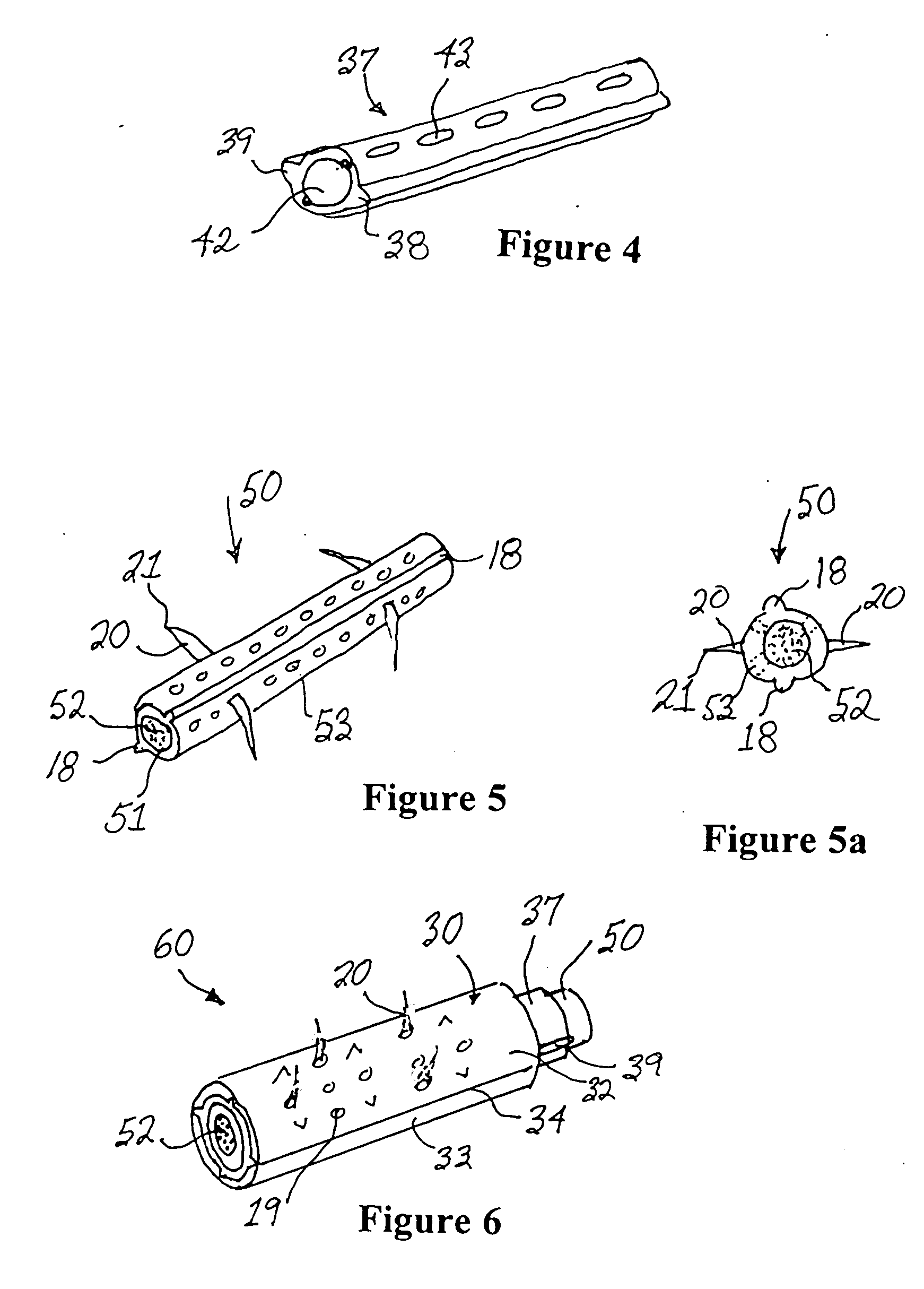Intervertebral prosthesis
a technology of intervertebral bone and prosthesis, which is applied in the field of osteogenic interbody fusion implant devices, can solve the problems of inability to biocompatible material from which the fusion graft is made, chronic and/or debilitating back pain, and nerves passing near the affected area may be compressed and consequently irritated, so as to promote the fusion of adjacent vertebra
- Summary
- Abstract
- Description
- Claims
- Application Information
AI Technical Summary
Benefits of technology
Problems solved by technology
Method used
Image
Examples
Embodiment Construction
[0038] With reference to FIG. 1, the expandable intervertebral prosthesis 10 in accordance with a first preferred embodiment of the present invention comprises a tubular outer body portion 11 with an expansion cylinder 12 slidably disposed within an axial bore 13 in the tubular outer body portion 11. The expandable intervertebral prosthesis 10 has a proximal end 14 and a distal end 15. The wall of the tubular outer body portion has a plurality of holes 19 therein. The cylindrical axial bore 13 is coextensive with the length of the tubular outer body portion 11. The expansion cylinder 12 having a guide track 18 and a plurality of elastically deformable barbs 20 disposed along the length thereof is shown in greater detail in FIG. 2.
[0039] In order to use the embodiment of the expandable intervertebral prosthesis indicated at numeral 10, a hole is first drilled between adjacent vertebrae in a direction substantially transverse to the direction of the spine, the hole being centered bet...
PUM
| Property | Measurement | Unit |
|---|---|---|
| Pseudoelasticity | aaaaa | aaaaa |
Abstract
Description
Claims
Application Information
 Login to View More
Login to View More - R&D
- Intellectual Property
- Life Sciences
- Materials
- Tech Scout
- Unparalleled Data Quality
- Higher Quality Content
- 60% Fewer Hallucinations
Browse by: Latest US Patents, China's latest patents, Technical Efficacy Thesaurus, Application Domain, Technology Topic, Popular Technical Reports.
© 2025 PatSnap. All rights reserved.Legal|Privacy policy|Modern Slavery Act Transparency Statement|Sitemap|About US| Contact US: help@patsnap.com



